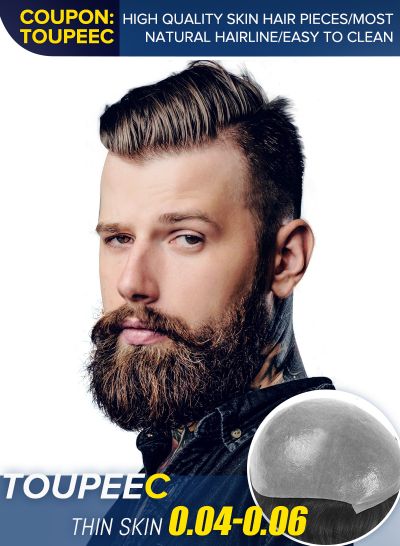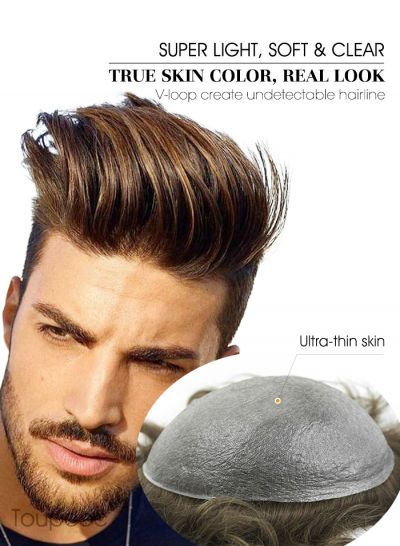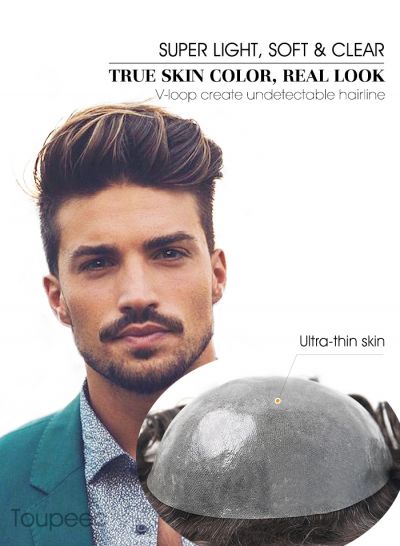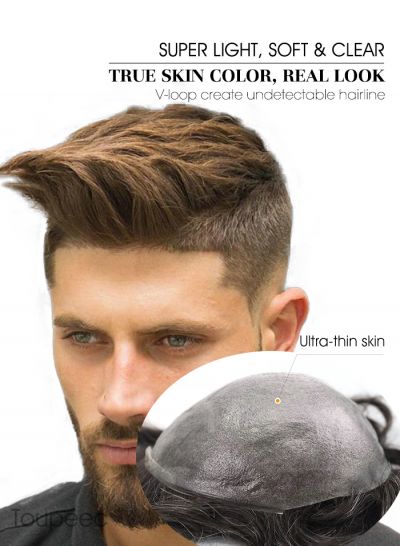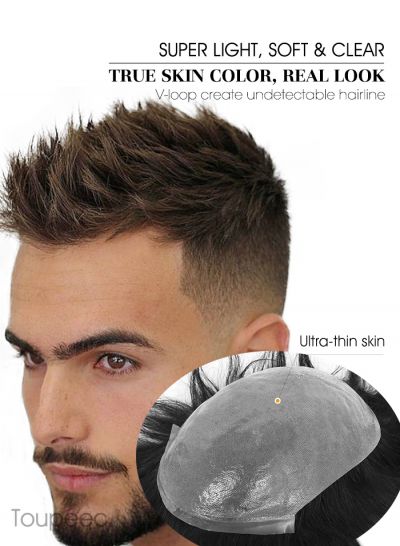How to make the hairline look natural?
What's the most annoying thing for the wearer of hair replacement systems?
It's a detectable hairline, of course. Big black knot, thick base edge and straight knot.
Toupeec usually provides the following solutions:
Bleached knot
After tying the hair, you can see the knot, especially the dark hair. We apply liquid bleach to the bottom side without hair, and when the liquid seeps from the single / lace to the other side, the knots are bleached to gold, which makes them invisible.
The lace can only be connected to the larger mono. These materials include: French lace, Swiss lace, fine welded mono and German mesh. There are no bleaching knots on the following materials: Poly, fine monochrome, super fine monochrome, silk monochrome
If the hair color is too dark (such as black) or the density is too heavy, the knot cannot be bleached effectively.
For customers who like feather light lace design and order medium to light density, it is recommended to use bleached knot.
Add poorly ventilated hair
Under ventilation, the hair is ventilated along the front base edge to the opposite side of the base. This is another way to reduce visibility. It is used in multilateral or hem systems.
If you like to brush your hair back, we don't recommend this method. The hair with insufficient ventilation always splits from the brush back because of the opposite direction of hair knot.
Single hair single knot and gradual density
Some customers even require a high density of the front hairline, because they think that high volume hair can completely cover the base edge.
Actually, that's wrong. Toupees need hairline with gradually decreasing density. It's best to have one hair per knot.
For the basic design with French lace or welded mono in front, if the density in front is not very heavy, we always do this.
For basic designs with ultra-thin skin on the front, the hair is usually V-Looped, with an area of 1 / 8 or 1 / 4 inch on the front edge. These are invisible.
Cut scallops
The fan-shaped edges allow you to avoid straight and stiff hairlines. This is a good choice if the material is single or does not fade at the front.
However, if the front substrate is French lace, Swiss lace, ultra-thin skin or silicon base, it is not available.







